Circular economy and urban mining in established buildings
Huthmacher-Haus in Berlin as a blueprint
Located on Hardenbergplatz in Berlin’s City West, Huthmacher-Haus is a commercial high-rise built in the 1950s that forms part of the Bikini Berlin complex. Bayerische Hausbau has set itself a major goal for this building: Supported by EPEA – Part of Drees & Sommer, and Madaster, the company will undertake a sustainable and resource-friendly partial renovation.
The approach is sustainable refurbishment par excellence: The first step is a careful identification of all materials used in the building to ensure as much as possible can be reused in the partial renovation with the aim of cutting carbon emissions and helping to achieve climate goals.
This structured approach is recommended for any renovation – especially for owners who have many properties in their portfolio. And for Bayerische Hausbau, the Huthmacher-Haus project is also serving as a pilot project for possible future renovations.
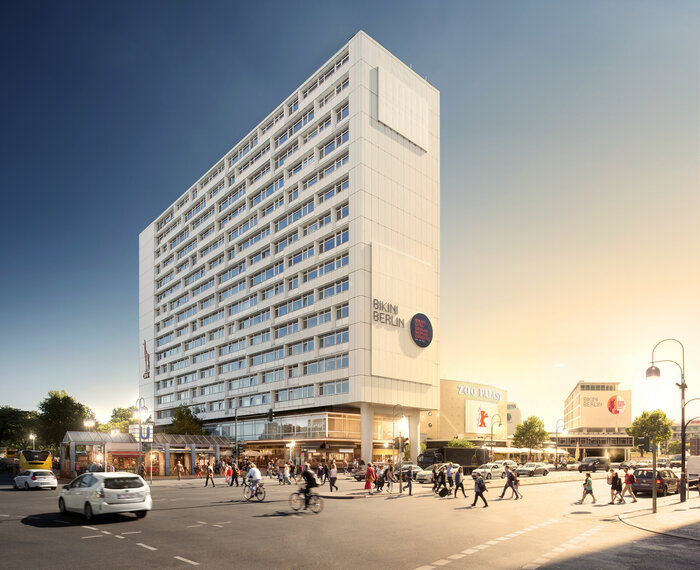
Sustainable refurbishment – an upgrade for established buildings
The owners of real estate portfolios face the important task of modernizing their building stock. The good news is that the buildings of tomorrow have already been built – and sustainable refurbishment can be achieved if the right approach is adopted.
In addition to regular renovations, there are two key reasons to make established buildings fit for the future: ESG goals – especially climate protection – and social trends. The German federal government plans to introduce a digital Building Circularity Passport. This will allow portfolio holders to prove what building materials and components their properties contain – and what can be reused.
In the case of the Huthmacher-Haus project, Bayerische Hausbau is taking an exemplary approach to sustainable refurbishment: A comprehensive inventory provides transparency regarding the materials used. This is recommended as the first step in all renovation project, as it provides the basis for all subsequent decisions: Which materials are recyclable, that is, can be dismantled, separated and reused as raw materials for renovation? And which, on the other hand, are contaminated and have to be disposed of.
AIMING HIGH – AN INSIGHT INTO THE COMMERCIAL HIGH-RISE
„We see the recyclability of buildings as a huge opportunity. That’s why we want to analyze our existing properties – to know what raw materials the buildings contains. We see Huthmacher-Haus as a pilot project.“
Hannes Giese
BIKINI Berlin Project Management – Huthmacher-Haus, Bayerische Hausbau
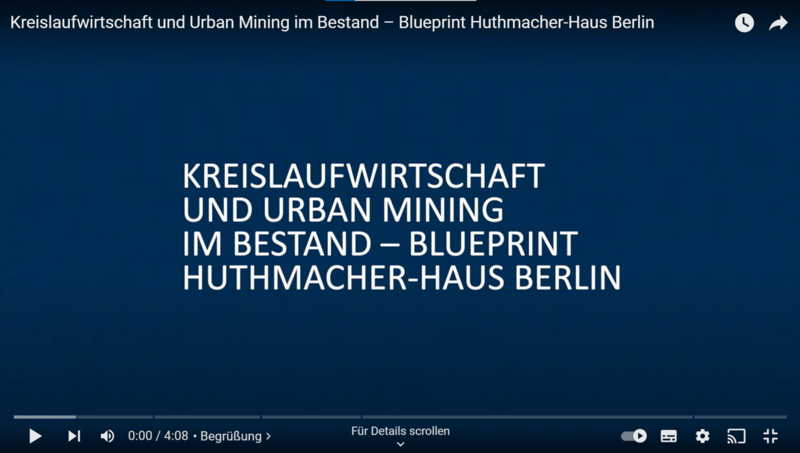
HUTHMACHER-HAUS – A PROFILE
- Built in 1957 to plans by architects Paul Schwebes and Hans Schoszberger.
- Modernistic post-war architecture, most recently refurbished in mid-1980s.
- The name ‘Huthmacher’ stems from a former café and dance hall that was located in the ground floor for many years.
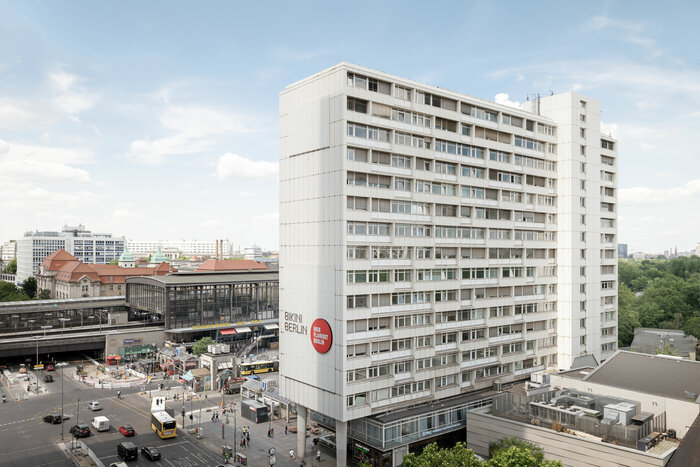
URBAN MINING – TURNING OLD INTO NEW
Recovering secondary raw materials from existing buildings and reusing them in the next step makes sense, and not only for ecological reasons. The scarcity and rising cost of raw materials, increasing disposal costs and dependence on third countries make the use of secondary raw materials essential.
Thanks to urban mining:
- Negative impacts resulting from raw material extraction, such as water stress and biodiversity loss, can be avoided.
- Established buildings become valuable raw material repositories and part of valuable material cycles — if the building’s ingredients and their quality are known.
FROM THEORY TO PRACTICE – THE HUTHMACHER HOUSE AS A RAW MATERIAL REPOSITORY
How did Huthmacher-Haus become a raw material repository? EPEA – Part of Drees & Sommer –
- Evaluated relevant urban mining potential and the planned modernization measures
- Carried out potential analysis with a focus on the potential their reusability of components and building materials
- Prepared a detailed inventory of the materials present on site
- Analyzed historical detail drawings to gain important insights into component layers, connecting elements and fasteners.
WHAT DOES THAT LOOK LIKE IN DETAIL?
Precise documentation is all-important, as the meticulously recorded data can still be used years later.
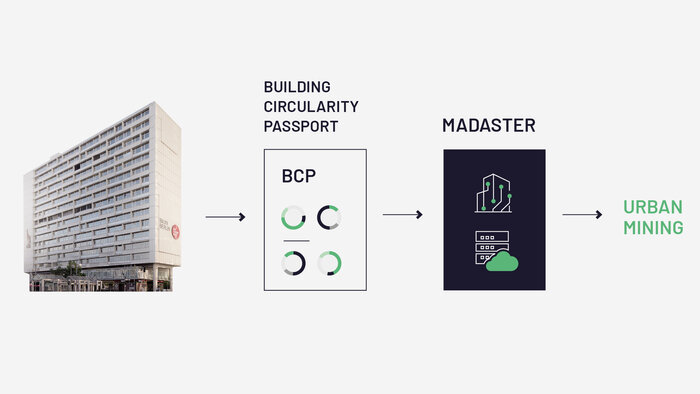
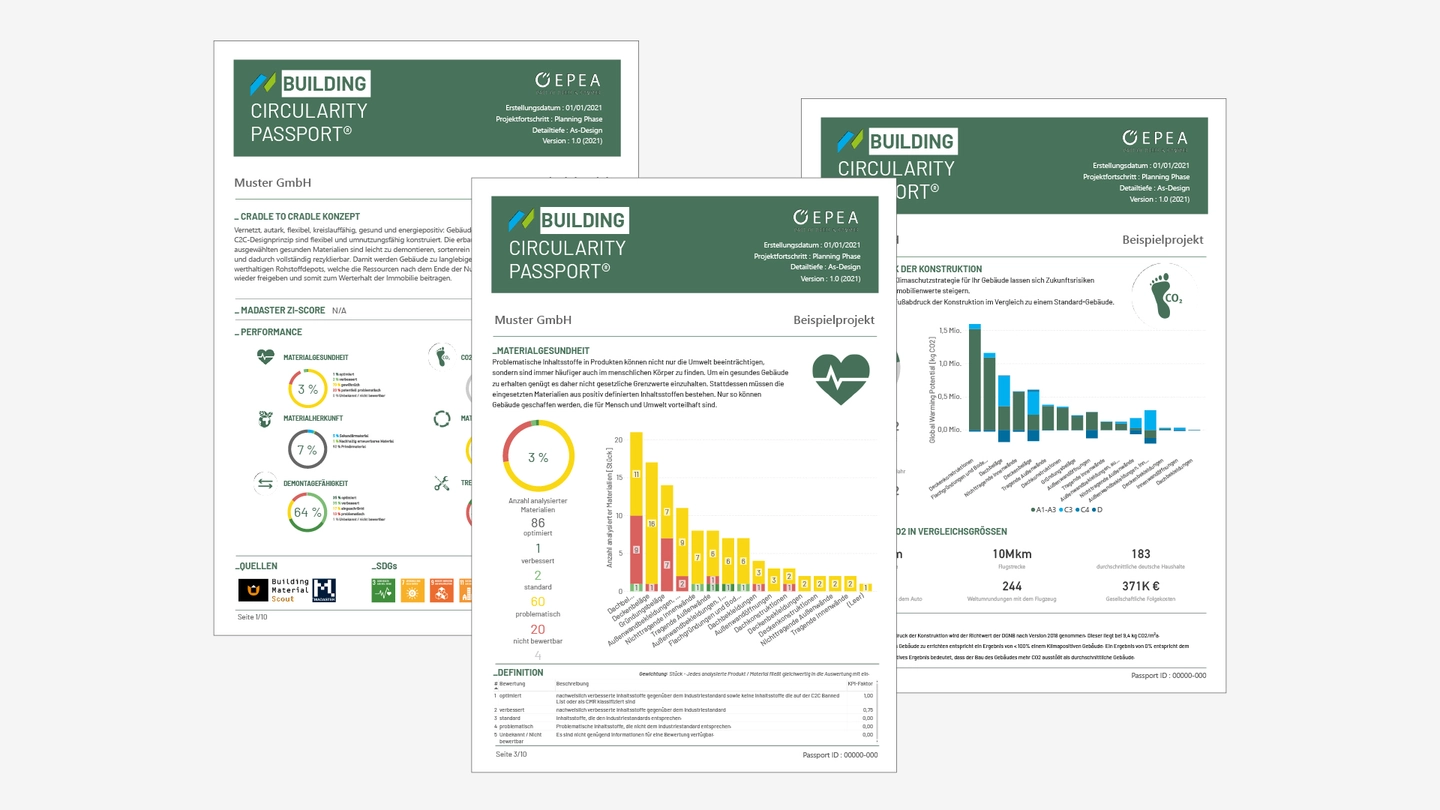
Huthmacher-Haus can already show its passport. The Circularity Passport® - buildings precisely documents the materials, their recyclability and the building’s carbon footprint.
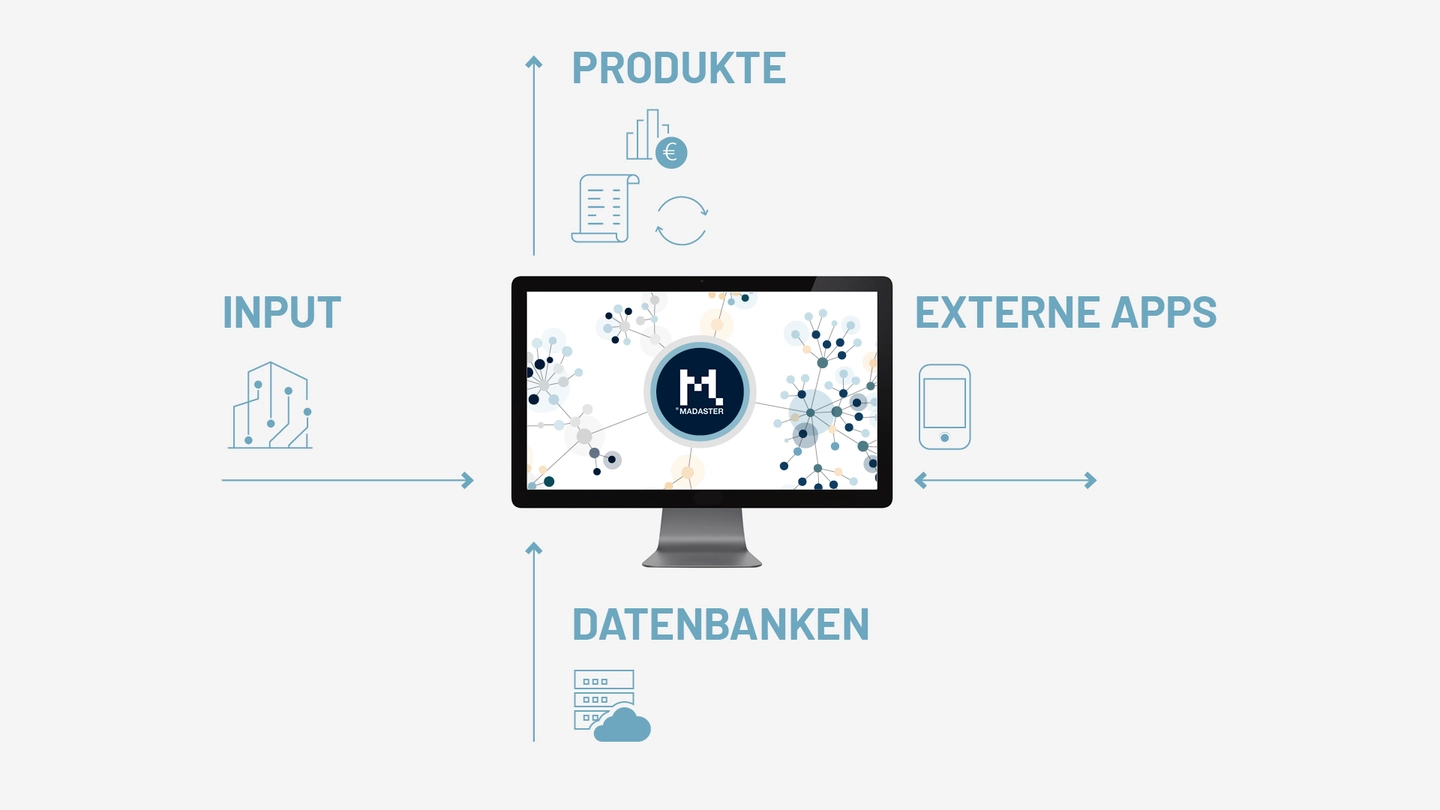
All data recorded in the Building Circularity Passport for the entire lifecycle of Huthmacher-Haus can be viewed in the Madaster building database.
Property owners and stakeholders can manage, supplement and store their data on this online platform.
The data collected by EPEA can be intelligently analyzed and shared with participating players at the press of a button:
- How high are the building-specific carbon emissions?
- What percentage +++of the materials in the building can be recycled?
- And what is the financial value of the materials?
All this can be determined via the digital platform – offering great added value for all actors involved and an enormous time saving. And this data remains available right up to the end of the property’s lifecycle. This means allows decision-makers to make exact statements about recoverable raw materials in the event of deconstruction.
“The information about the collected materials is digitally recorded on the Madaster platform and enriched with further data. In this way, the data and material values are obtained and the consumption of resources is reduced in keeping with the principle of urban mining.”
Patrick Bergmann
Managing Director, Madaster Germany
Let's talk.
We look forward to hearing from you!